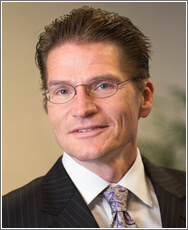Common Misconceptions about Shaken Baby Syndrome
Interviewer: What are some of the top misconceptions that both the client and the general public have about the shaken baby syndrome?
Paul Cramm: First and foremost, the diagnosis has recently received far closer scrutiny within the medical community. The primary symptoms of the alleged syndrome – retinal hemorrhage, subdural hemorrhage or hematoma and cerebral edema – do not always establish intentional abusive conduct.
There have been many cases built and prosecuted against persons when only one of these three symptoms was present in the child. Overly aggressive medical experts will make findings or render opinions of abuse with limited medical information to back that up. The problem we have is that our natural instinct to protect children, particularly infants who are so incapable of protecting themselves, clouds our judgment.
Unfortunately, Public Perception Is That the Parent or Caregiver Is Automatically Guilty in These Situations
We seem to reverse the burden. We seem to shift the burden, the community does, when they hear that a child has been injured. The suspicion against the care provider is overwhelming. Rather than a situation where people presume this person did not do anything wrong and they wait for the government to prove beyond a reasonable doubt that they did, people immediately presume that the caregiver must have lost their temper with the child and its up to the accused person to prove that they did NOT harm the child.
It seems that the general public backlash is to presume that this person must have done something wrong and to wait and see if they can prove their innocence. These are cases where, as defense counsel, you really do feel that the burden is entirely reversed and your job is to prove that your client is innocent.
Interviewer: Sounds like an uphill battle.
Often, the Attorney Will Utilize Expert Witnesses in the Defense
Paul Cramm: Absolutely it is an uphill battle and that’s why, as I’ve said so many times, these cases are ‘team effort’ cases. You must have top notch fact investigators. You must have top notch physicians and experts to review the case and provide consultation.
You do need to have a preeminent expert witness available to testify at trial. The expert will explain to your jurors and judge, what the medical science really is and the extent to which an opinion of the prosecutions physician expert should or should not be accepted.
Interviewer: What are some of these medical experts? What are type of medical experts are we looking at?
Paul Cramm: You certainly want to talk with pediatricians. You want a board certified pediatrician. You’ll want to consult with a board certified emergency trauma physician. Often times we’ll need to talk to a pathologist. There are several pathological changes to tissues, brain tissue, that could be the result of physical trauma or can be the result, for example, of oxygen deprivation.
In a case where a child has just fed and maybe he’s lying in a position where he belches or regurgitates some food that blocks his airway, blockage of the airway can cause oxygen deprivation or hypoxia. Which will create a very distinct pattern of tissue damage when compared with injury resulting from force or trauma. The only way to know that is to have the correct experts, board certified pathologist, review the slides of the tissue samples, to determine what type of forces or conditions were exerted upon the tissue to cause the identifiable injury.

Call For Consultation
(913) 322-3265
Related Articles
- What Should You Say If You Are Being Questioned by the Police About an Alleged Child Abuse Situation Involving Shaken Baby Syndrome?
- When Might You Be Questioned by the Police If You Are at the Hospital with an Injured Child?
- What Might Your Attorney Advise If You Are Facing a Charge of Shaken Baby Syndrome?
- Any Time a Child Is injured under an Adult’s Care, the Authorities Involve Child Protective Services and Hospital Staff to Determine If the Injuries Were Intentional
- What Is the Prosecutor’s Approach in a Case Involving Allegations of Shaken Baby Syndrome?

